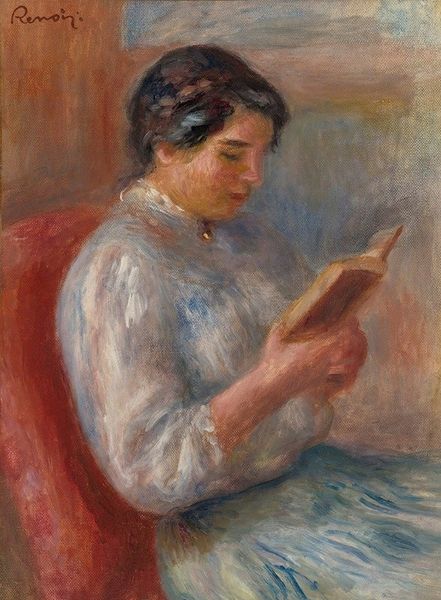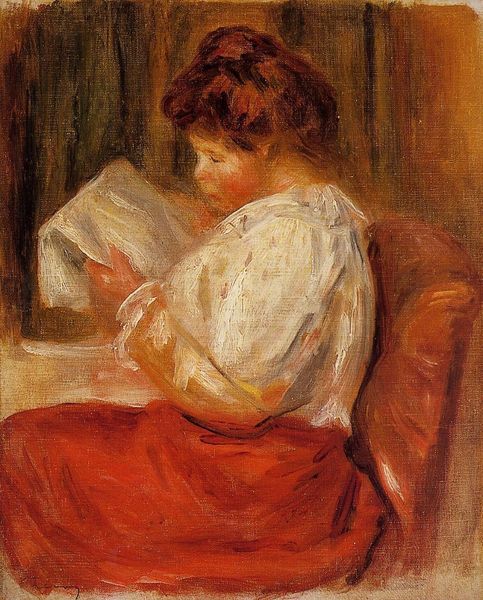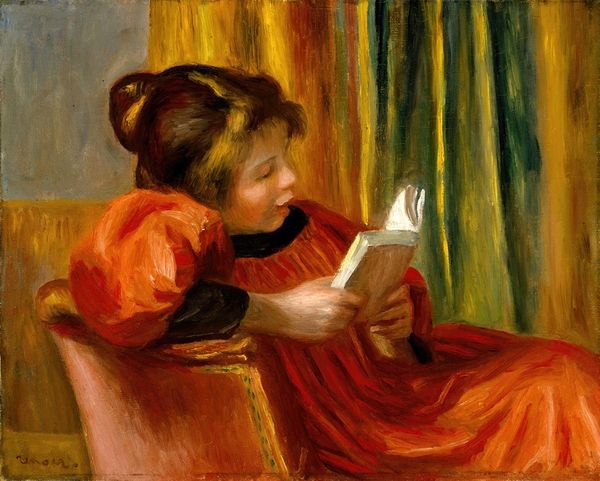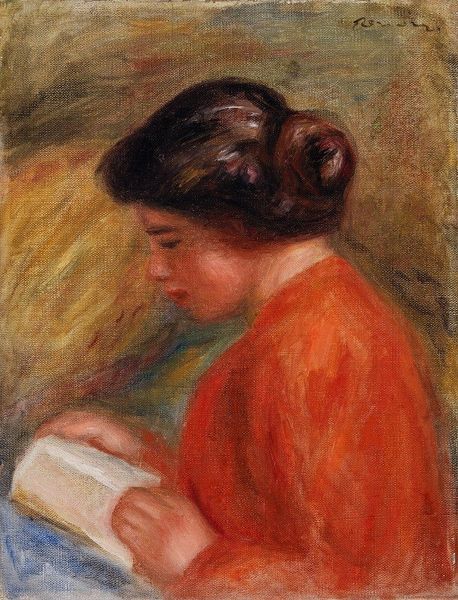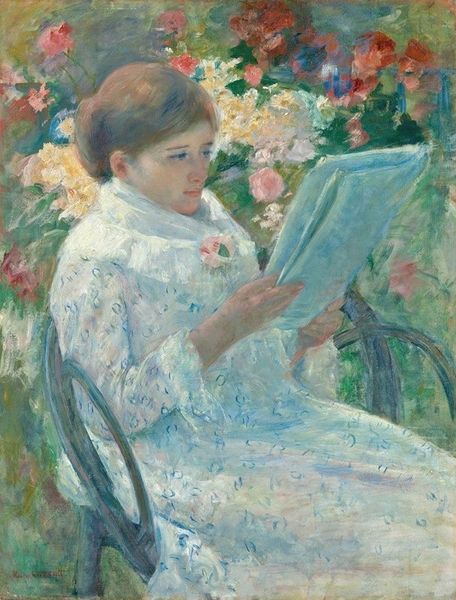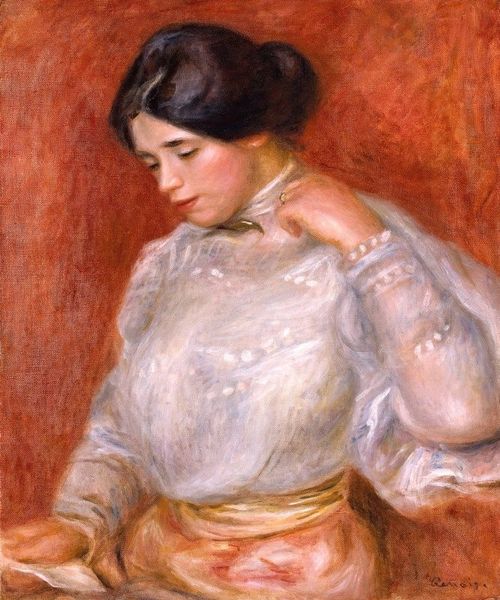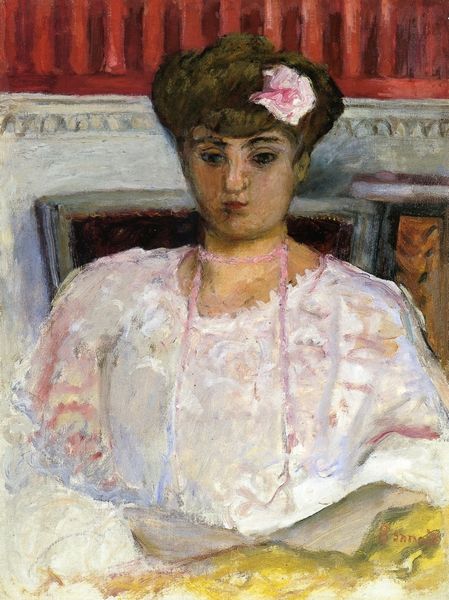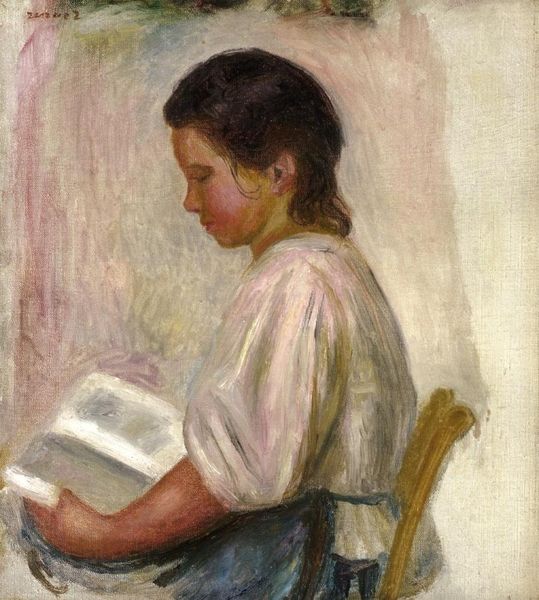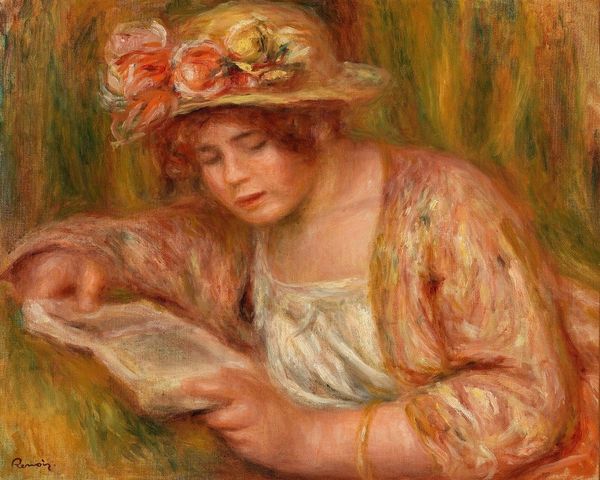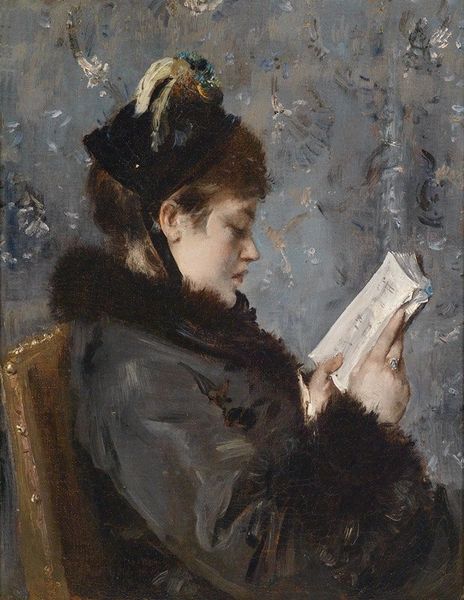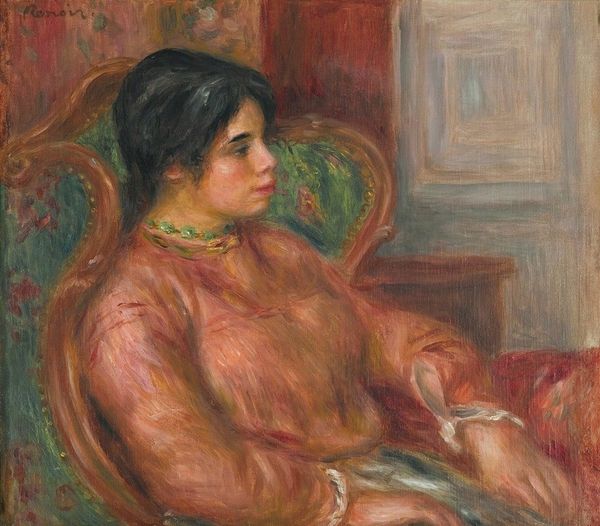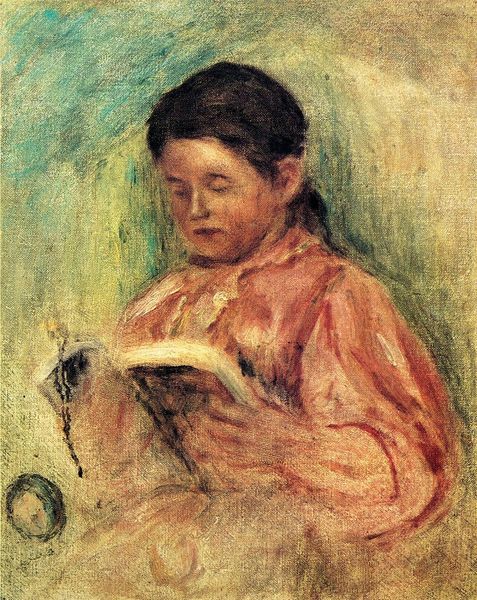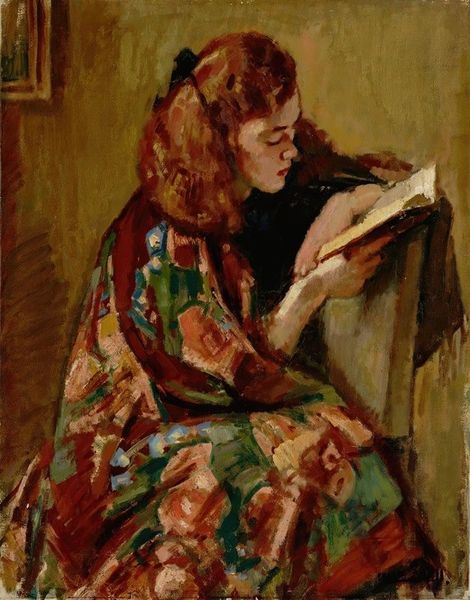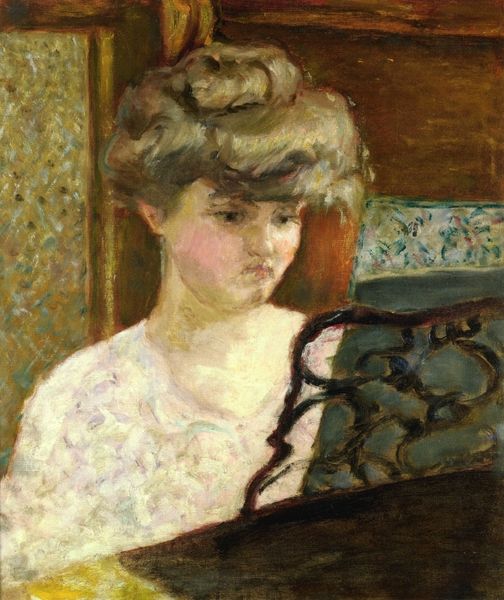
Copyright: Public Domain: Artvee
Curator: Well, here we have Pierre-Auguste Renoir's oil painting "Gabrielle Lisant," dating back to 1910. Editor: It radiates such quiet warmth! Like sunshine filtered through rose-tinted glasses, capturing an everyday moment yet imbuing it with… gentleness. Curator: Exactly. Look how Renoir bathes the scene in a diffused, soft light—very characteristic of his late Impressionistic style. The brushstrokes are loose, almost feathery. You’ll see how the woman is not realistically portrayed in detail. Editor: And the stripes! Red and white stripes on her robe, even echoed in the armchair, almost dizzying— yet the painting remains calm, her serenity seems unperturbed. I mean, isn’t the symbolism striking here? Curator: Very much so. Renoir loved stripes, they can suggest societal structures and are strongly indicative of the era. She’s inside, confined to the walls of the domestic, which is her role at this moment, or a statement on her positionality. The domestic is the realm of women and the color represents femininity as well. Editor: That’s fascinating! Although she may not want that symbolism to box her. It’s intriguing how the book—a portal to infinite worlds—becomes a quiet rebellion against that very expectation. Curator: Books often do play that role, especially for women within those social confines. And with Impressionism, Renoir attempts to reflect this new social reality as well, women’s role included. Editor: It makes me think, what if, in the painting's quietude, is an untold, epic internal journey that's as meaningful to Gabrielle. What novel has whisked her away in reverie, what might its red stripes indicate?! Curator: Indeed. And consider, this work appears near the end of Renoir's life when his eyesight was failing, he relied on bold colors to render outlines and evoke volume, as he himself was undergoing yet another change in reality, so perhaps he was exploring themes and colors he wanted to highlight near the end of his life. Editor: You've shifted my perspective entirely. From domestic interior to the twilight landscape of Renoir's vision itself. Curator: That’s the beauty of art isn’t it? Revealing a history through symbols and our own human reflection simultaneously.
Comments
No comments
Be the first to comment and join the conversation on the ultimate creative platform.
